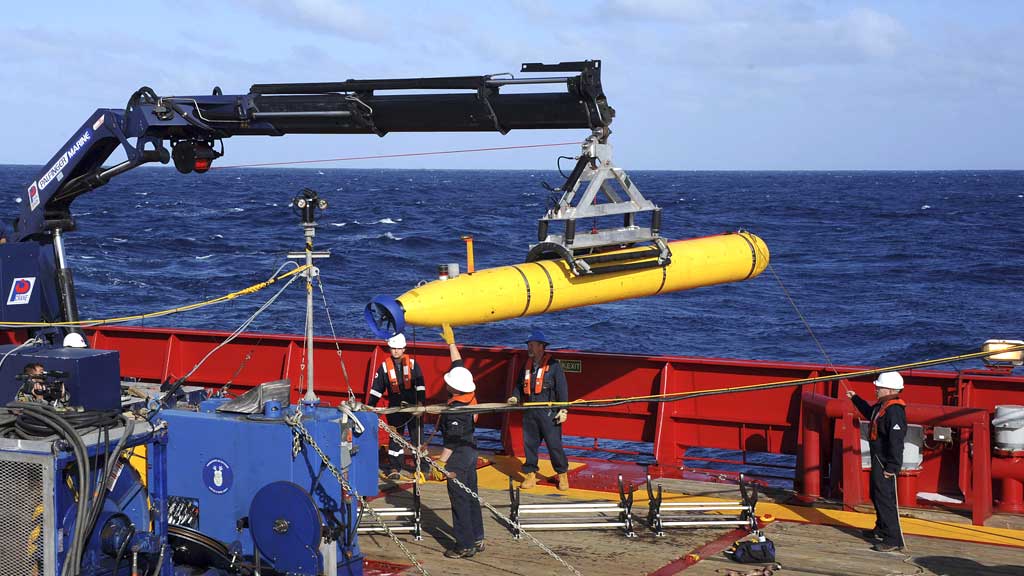MH370 search goes underwater – with the help of a drone
A US Navy drone is deployed to scour the floor of the Indian Ocean, as hopes of finding the missing MH370’s black box recorder fade.

The US Navy’s sophisticated Blue-fin 21 autonomous underwater vehicle is set to search the ocean floor for wreckage some 4.5 kms beneath the surface.
Previous hopes of locating the plane’s black box recorder are fading fast, as Australia’s search chief said that the batteries had probably died by now.
Angus Houston also said there was now little chance of finding floating debris, and that the search was now reliant on the new underwater phase of the operation, which comes after nearly six weeks of fruitless searching.
The missing aircraft disappeared soon after taking off on 8 March from Kuala Lumpur bound for Beijing with 227 passengers and 12 crew on board, triggering a multinational search that is now focused on the Indian Ocean.
The Blue-fin robot will build up a detailed acoustic image of the area using sophisticated “sidescan” sonar, hoping to repeat its success in finding a F-15 fighter jet which crashed off Japan last year.
If it detects possible wreckage, these images will be sent back to photograph it in underwater conditions with extremely low light.
Location, location, location
Searchers are confident they know the approximate position of the wreckage of the Boeing 777, some 1,550 km north west of Perth, and are moving ahead on the basis of four acoustic signals they believe are from its black box recorders.
“Despite the lack of further detections, the four signals previously acquired taken together constitute the most promising lead we have in the search for MH370,” Houston told reporters in Perth.
“The experts have therefore determined that the Australian Ocean Shield will cease searching with a towed pinger locator later today and deploy the autonomous underwater vehicle, Bluefin-21, as soon as possible,” he said, referring to the US Navy device designed to detect the tell-tale “pings”.
The batteries in the black boxes are now two weeks past their 30-day expected life and searchers will be relying on sonar and cameras on the Bluefin-21 drone.